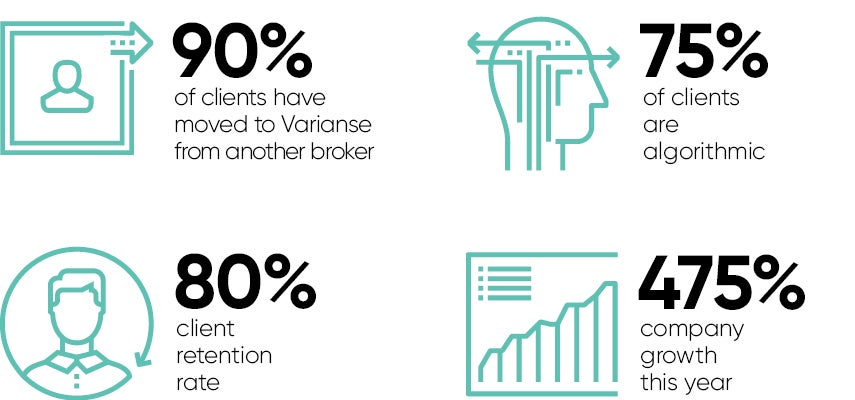The foreign exchange markets have come a long way from the days of phone dealing in the 1990s when actual price transparency was limited to financial institutions and brokers with access to interbank dealing and quote platforms. The digital revolution has taken over.
The explosion of the internet along with the development of high-speed trading platforms and network links has enabled a multitude of market participants to be fully connected in a ubiquitous environment.
User demand for native online trading experiences has led to the availability of real-time global currency rates aggregated from multiple sources, matched with electronic order and trade execution performed almost instantaneously with a key press.
As traders and investors enjoyed new-found electronic trading accessibility, brokers raced to be the service of choice, utilising the speed of deploying off-the-shelf solutions based on the popular MetaTrader4 software. This has resulted in a series of similar trading platform offerings coming in a myriad of different guises, some with added bells and whistles, but mainly harbouring the same underlying functionality.
With little differentiation and added value, saturation was inevitable and brokers sought to win client market share by reducing spreads and commissions, ultimately sparking a price war.
While creating many benefits for the underlying clients of these services and greatly enhancing the opacity of FX rates, spreads have reduced to such narrow levels that profit margins have been squeezed. With leading brokerages reporting record turnovers, has the race to gain traction with the first generation of digital FX traders come at a hidden cost to the client?
“There have been great advances in price transparency in the fragmented OTC (over-the-counter) FX markets, however what is rarely mentioned is execution transparency, where the client has the ability to track the life cycle of their order,” says Rohit Mirpuri, managing partner at Varianse, a City of London-based fintech brokerage, which provides a boutique advanced electronic FX broking service specifically tailored to its clients.
Traders have the choice and control of when and at what price they choose to trade, but once their order is transmitted to the broker, the dynamics change as control and responsibility are immediately shifted to the execution venue.
Varianse is able to effectively service and cater to the needs of professional traders
This remains the case with most established brokers. Clients are routinely able to trade on one price feed and there are little insights available to them once they have placed an order. If they experience slippage, rejections or poor execution, they cannot influence the deal quality and are typically left with limited choices of either acceptance or finding another provider.
“Varianse is able to effectively service and cater to the needs of professional traders, where execution quality is paramount, and who require a partner broker to co-operate with on a granular level, and to understand and effectively manage their liquidity and technology expectations,” says Mr Mirpuri.
The firm can offer both pre and post-trade transparency, allowing the individual client to see which liquidity provider was the end-counterpart of the trade, namely being a tier-one bank, non-bank institution or ECN (electronic communication network).
In addition, this level of transparency can be extended to allow the client to have a dynamic market-watch view of which banks are pricing into their feed, all in real time, with full depth of book available. This empowers clients with a professional oversight of where the real interbank market is and what real volume is available at each price level, allowing them to make smarter decisions.
Complementing this, Varianse goes one step further in terms of data analytics. Varianse gathers client order life-cycle intelligence and provides traders with unique insights into latency, execution times, rejections and slippage on a per trade basis. These reports can become more granular depending on the client’s needs, for example by calculating averages on metrics per liquidity provider and currency pair symbol. This level of deep analysis allows for bespoke tailoring of a price feed that is unique to the client, complementing their trading strategy.
The benefits and practicalities of this bespoke approach create a wealth of opportunities to an array of market participants, from money managers executing large block orders who require minimum market impact, to high-frequency and algorithmic traders who demand ultra-low latency, rapid execution times and seek to create an optimal liquidity pool to deploy their trading strategy.
The team behind Varianse houses a wealth of experience from tier-one investment banks and global asset managers in OTC, cash and exchange-traded derivative markets, specifically relating to electronic trading technology and statistical analysis.
Furthermore, technology is of strong focus and underpins the brokerage’s core operation, from pricing and aggregation to liquidity distribution. This is backed by a solid electronic trading infrastructure, housed in Equinix data centres in London, with global connectivity from New York, Tokyo, Hong Kong and Shanghai, to service a diverse client base.
Additionally, Varianse can educate and consult on optimal technology set-ups to reduce latency and improve trading system performance, and configure FIX connections for API (application programming interface) and proprietary traders running their own dedicated trading servers.
“Each trader is unique and has different requirements, and in any business environment there is not a one-size-fits-all model,” says Mr Mirpuri. “Varianse has recognised this and is focused on providing an array of distinct trading services, combined with information and analysis that is rarely available to the end-client, catering to the astute trader of any size.”
To find out how Varianse can help you achieve your trading goals please visit www.varianse.com

